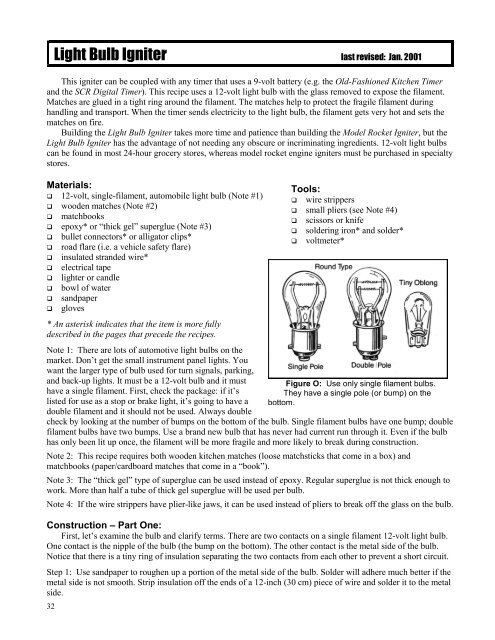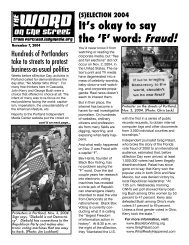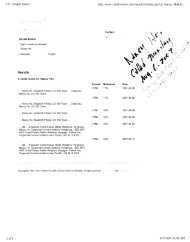Setting Fires With Electrical Timers
Setting Fires With Electrical Timers
Setting Fires With Electrical Timers
You also want an ePaper? Increase the reach of your titles
YUMPU automatically turns print PDFs into web optimized ePapers that Google loves.
32<br />
Light Bulb Igniter last revised: Jan. 2001<br />
This igniter can be coupled with any timer that uses a 9-volt battery (e.g. the Old-Fashioned Kitchen Timer<br />
and the SCR Digital Timer). This recipe uses a 12-volt light bulb with the glass removed to expose the filament.<br />
Matches are glued in a tight ring around the filament. The matches help to protect the fragile filament during<br />
handling and transport. When the timer sends electricity to the light bulb, the filament gets very hot and sets the<br />
matches on fire.<br />
Building the Light Bulb Igniter takes more time and patience than building the Model Rocket Igniter, but the<br />
Light Bulb Igniter has the advantage of not needing any obscure or incriminating ingredients. 12-volt light bulbs<br />
can be found in most 24-hour grocery stores, whereas model rocket engine igniters must be purchased in specialty<br />
stores.<br />
Materials:<br />
G 12-volt, single-filament, automobile light bulb (Note #1)<br />
G wooden matches (Note #2)<br />
G matchbooks<br />
G epoxy* or “thick gel” superglue (Note #3)<br />
G bullet connectors* or alligator clips*<br />
G road flare (i.e. a vehicle safety flare)<br />
G insulated stranded wire*<br />
G electrical tape<br />
G lighter or candle<br />
G bowl of water<br />
G sandpaper<br />
G gloves<br />
* An asterisk indicates that the item is more fully<br />
described in the pages that precede the recipes.<br />
Note 1: There are lots of automotive light bulbs on the<br />
market. Don’t get the small instrument panel lights. You<br />
want the larger type of bulb used for turn signals, parking,<br />
and back-up lights. It must be a 12-volt bulb and it must<br />
have a single filament. First, check the package: if it’s<br />
listed for use as a stop or brake light, it’s going to have a<br />
double filament and it should not be used. Always double<br />
Tools:<br />
G wire strippers<br />
G small pliers (see Note #4)<br />
G scissors or knife<br />
G soldering iron* and solder*<br />
G voltmeter*<br />
Figure O: Use only single filament bulbs.<br />
They have a single pole (or bump) on the<br />
bottom.<br />
check by looking at the number of bumps on the bottom of the bulb. Single filament bulbs have one bump; double<br />
filament bulbs have two bumps. Use a brand new bulb that has never had current run through it. Even if the bulb<br />
has only been lit up once, the filament will be more fragile and more likely to break during construction.<br />
Note 2: This recipe requires both wooden kitchen matches (loose matchsticks that come in a box) and<br />
matchbooks (paper/cardboard matches that come in a “book”).<br />
Note 3: The “thick gel” type of superglue can be used instead of epoxy. Regular superglue is not thick enough to<br />
work. More than half a tube of thick gel superglue will be used per bulb.<br />
Note 4: If the wire strippers have plier-like jaws, it can be used instead of pliers to break off the glass on the bulb.<br />
Construction – Part One:<br />
First, let’s examine the bulb and clarify terms. There are two contacts on a single filament 12-volt light bulb.<br />
One contact is the nipple of the bulb (the bump on the bottom). The other contact is the metal side of the bulb.<br />
Notice that there is a tiny ring of insulation separating the two contacts from each other to prevent a short circuit.<br />
Step 1: Use sandpaper to roughen up a portion of the metal side of the bulb. Solder will adhere much better if the<br />
metal side is not smooth. Strip insulation off the ends of a 12-inch (30 cm) piece of wire and solder it to the metal<br />
side.
















